
Horncastle is a town and civil parish in Lincolnshire, 17 miles (27 km) east of the county town of Lincoln. Its population of 6,815 at the 2011 census was estimated to be 7,123 in 2019. A section of the ancient Roman walls remains.

St Leonards is a small village in the Chiltern Hills in Buckinghamshire, England. It is 3 miles east of Wendover and 4 miles south of Tring, Hertfordshire. A short section of Grim's Ditch delineates the northern end of the village, which lies within the civil parish of Cholesbury-cum-St Leonards.

Coningsby is a village and civil parish in the East Lindsey district in Lincolnshire, England, it is situated on the A153 road, adjoining Tattershall on its western side, 13 miles (22 km) north west of Boston and 8 miles (13 km) south west from Horncastle.
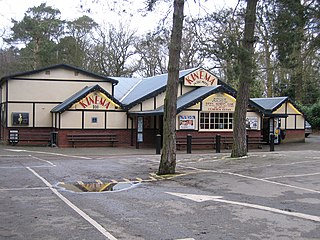
Woodhall Spa is a former spa town and civil parish in Lincolnshire, England, on the southern edge of the Lincolnshire Wolds, 6 miles (10 km) south-west of Horncastle, 23 miles (37 km) west of Skegness, 15 miles (24 km) east-south-east of Lincoln and 17 miles (27 km) north-west of Boston. It is noted for its mineral springs, cinema and its Second World War association with the RAF 617 Squadron. The cinema has the last remaining rear screen projector in the country.

Bardon is a civil parish and former village in North West Leicestershire about 1.5 miles (2.4 km) southeast of the centre of Coalville. The parish includes Bardon Hill, which at 912 feet (278 m) above sea level is the highest point in Leicestershire. With the population remaining less than 100, information from the 2011 census was included in the civil parish of Ellistown and Battleflat.

Bucknall is a village and civil parish in the East Lindsey district of Lincolnshire, England. The village is situated approximately 5 miles (8 km) west from Horncastle and 5 miles (8 km) north from Woodhall Spa.
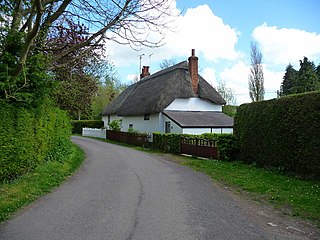
Bulford is a village and civil parish in Wiltshire, England, close to Salisbury Plain. The village is close to Durrington and about 1.5 miles (2.4 km) north of the town of Amesbury. The Bulford Camp army base is separate from the village but within the parish.

Drayton St. Leonard is a village and civil parish on the River Thame in Oxfordshire, about 8 miles (13 km) southeast of Oxford.

Kirkby on Bain is a village and civil parish in the East Lindsey district of Lincolnshire, England. It lies on the River Bain between Horncastle and Coningsby, and just west of the A153 road. Close to the north is the village of Haltham.
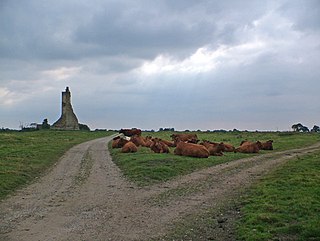
Kirkstead is an ancient village and former parish on the River Witham in Lincolnshire, England. It was amalgamated with the civil parish of Woodhall Spa in 1987.
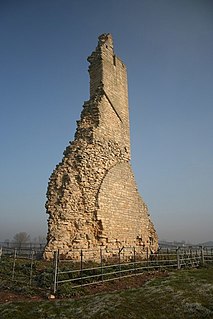
Kirkstead Abbey is a former Cistercian monastery in Kirkstead, Lincolnshire, England.

The medieval cathedrals of England, which date from between approximately 1040 and 1540, are a group of twenty-six buildings that constitute a major aspect of the country’s artistic heritage and are among the most significant material symbols of Christianity. Though diverse in style, they are united by a common function. As cathedrals, each of these buildings serves as central church for an administrative region and houses the throne of a bishop. Each cathedral also serves as a regional centre and a focus of regional pride and affection.
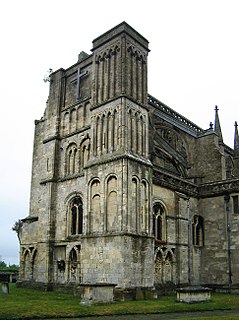
Malmesbury is a town and civil parish in Wiltshire, England. As a market town it became prominent in the Middle Ages as a centre for learning focused on and around Malmesbury Abbey, the bulk of which forms a rare survival of the dissolution of the monasteries. Once the site of an Iron Age fort, in the Anglo-Saxon period it became the site of a monastery famed for its learning and one of Alfred the Great's fortified burhs for defence against the Vikings. Æthelstan, the first king of all England, was buried in Malmesbury Abbey when he died in 939.
The Horncastle and Kirkstead Junction Railway was a seven mile long single track branch railway line in Lincolnshire, England, that ran from Horncastle to Woodhall Junction on the Great Northern Railway (GNR) line between Boston and Lincoln. There was one intermediate station, Woodhall Spa.

St Leonard's Tower is a probable Norman keep in West Malling, in the county of Kent, England. The tower was probably built by Gundulf, the Bishop of Rochester, between 1077 and 1108. It was a three-storey building, constructed of local stone, and would have stood at least 22 metres (72 ft) high. At a later point, probably during the English Civil War, the tower was deliberately damaged to prevent it being used for military purposes, and its uppermost storey was demolished. Concerns grew about the tower's condition in the 20th century and in 1937 it was taken into the guardianship of the state. In the 21st century, it is managed by English Heritage and the exterior is open to visitors.

Stixwould is a small village in the civil parish of Stixwould and Woodhall, in the East Lindsey district of Lincolnshire, England.

Covenham St Bartholomew is a village in the East Lindsey district of Lincolnshire, England. It is situated approximately 5 miles (8 km) north from Louth. The southern part of the village adjoins Covenham St Mary; both villages are ecclesiastical parishes and part of the civil parish of Covenham.

Wildmore is a civil parish in the East Lindsey district of Lincolnshire, England. It is situated approximately 9 miles (14 km) north-west from the town of Boston and 11 miles (18 km) south from Horncastle.

Bailiffscourt Chapel is a deconsecrated chapel in the grounds of Bailiffscourt Hotel, a luxury hotel near the hamlet of Atherington in West Sussex, England. Originally associated with the Norman Abbey of Séez, it was founded in the 11th century and rebuilt in its present simple Gothic form in the 13th century. It later fell out of use, but after Atherington's former church was destroyed by coastal erosion it was used again for public worship for a time—and as late as 1952 the building was again in use as a chapel of ease. Situated outside Bailiffscourt—a mock-medieval mansion built in 1935 by Lord Moyne on the site of an ancient manor house—on the only stretch of open seafront land for miles in each direction, the chapel is now used principally for wedding and civil ceremony blessings. English Heritage has listed it at Grade II* for its architectural and historical importance.
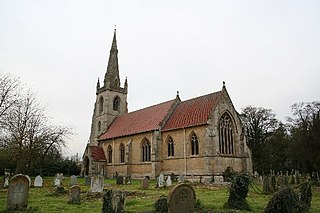
Revesby is a village and civil parish in the East Lindsey district of Lincolnshire, England. It is 7 miles (11 km) south-east from Horncastle, 8 miles (13 km) east from Woodhall Spa and 14 miles (23 km) north from Boston, and on the A155. The parish includes the hamlet of Moorhouses 3 miles (5 km) to the south of Revesby village.




















